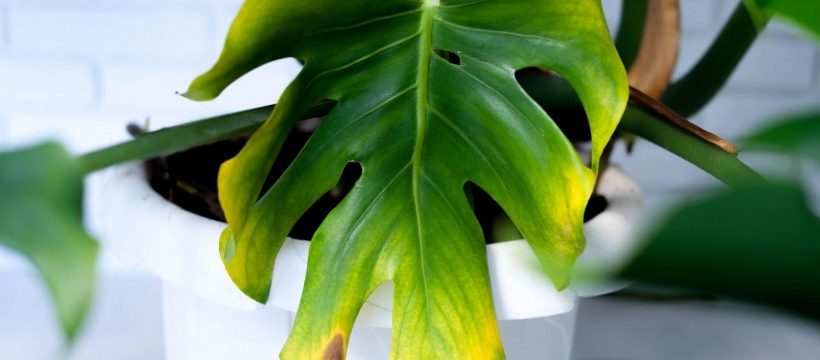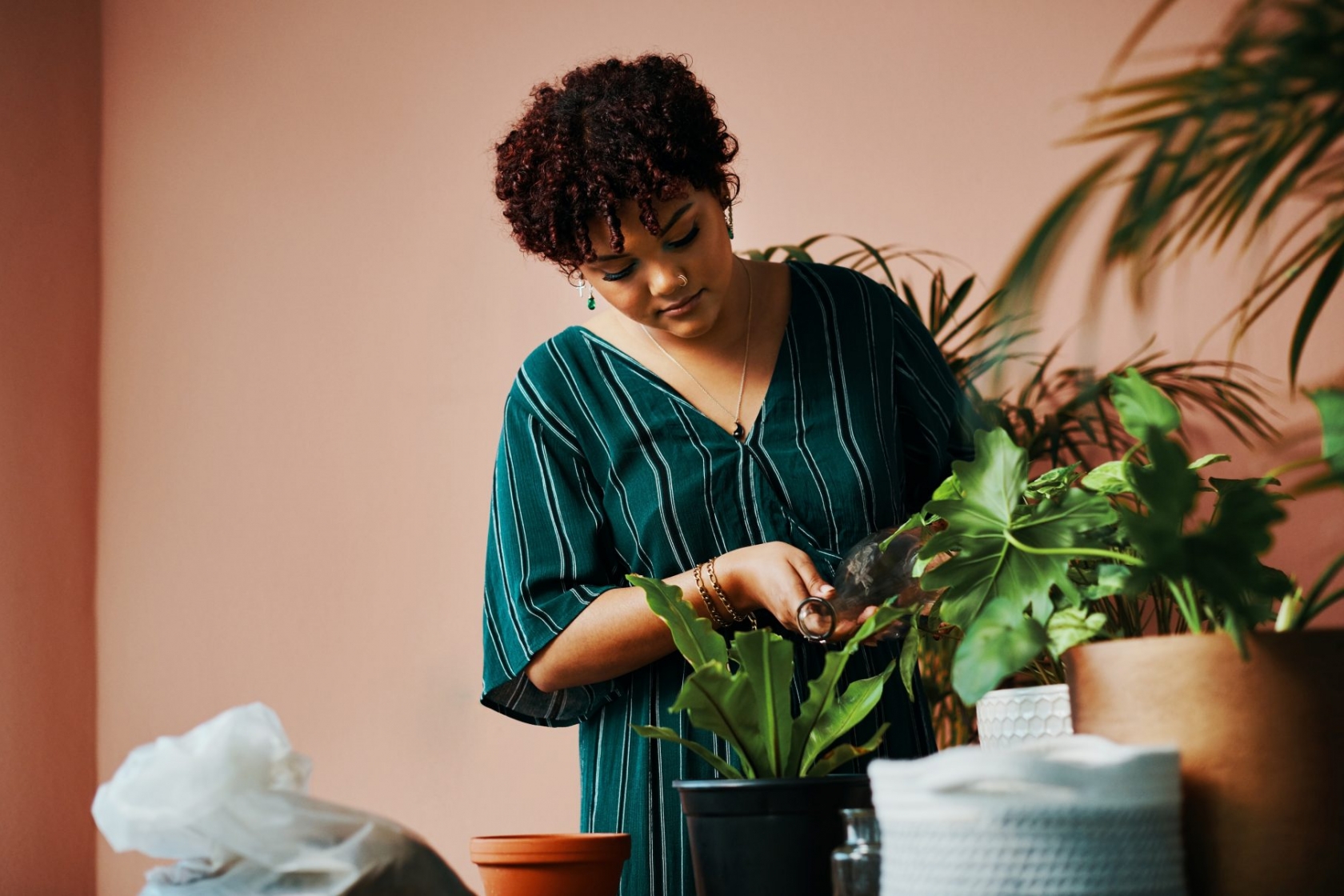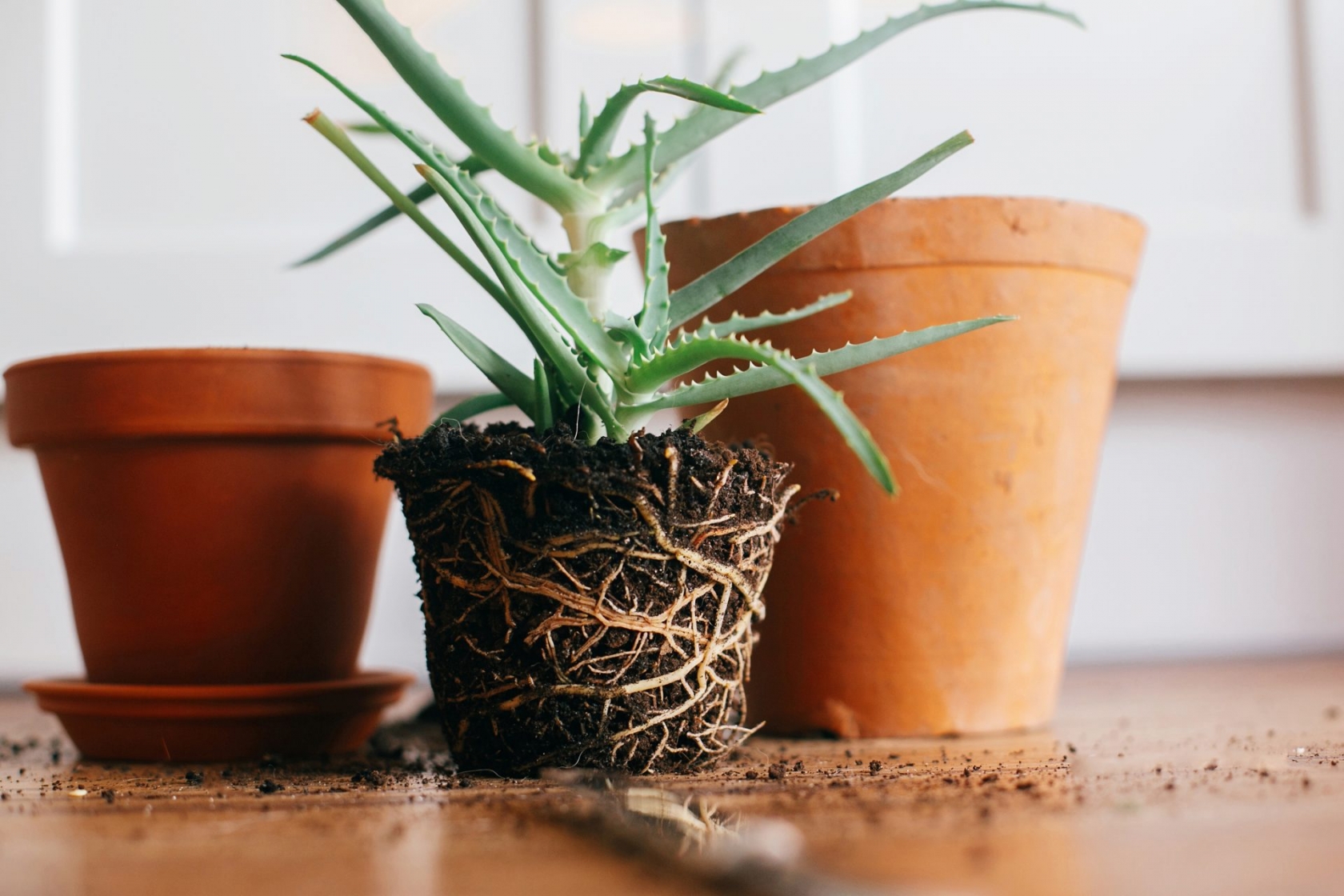The problem of yellow leaves on plants – although common – can be caused by a number of reasons. Here, an expert outlines four of the main ones.
No matter how much plant care experience you have, you’re bound to run into problems from time to time. While most plants will need a combination of light, soil and water to survive, learning how to get the balance right – and tailoring your care routine to suit your plants’ needs – isn’t always easy, especially if you’re dealing with a plant that is particularly sensitive.
As a result, it’s not uncommon for plants to face problems such as brown-tipped leaves and wilting foliage, especially when you first buy them and you’re getting to know their likes and dislikes.
Perhaps one of the most common problems many people face with their plants is yellowing leaves. Also known as ‘chlorosis’, leaf yellowing occurs when something interferes with the plant’s chlorophyll – the pigment which gives leaves their green colour and which plants use, combined with sunlight, to convert water and carbon dioxide into oxygen and glucose (aka, their food).
You may also like
What is indirect light? And why do plants need it? We asked an expert to explain
In short, chlorophyll is really important to your plants’ ability to survive – so when your plant’s leaves are showing a lack of it, it could be a sign that something is wrong.
The only problem? There are actually a number of different reasons why your plant’s leaves might turn yellow, so finding out exactly what’s wrong can be tricky.
With this in mind, we asked Richard Cheshire, Patch’s plant doctor, to talk us through the main reasons why a plant’s leaves might turn yellow – and how to fix it.
1. Too much water
If you’re a bit pour-happy with your watering can, overwatering could be to blame for your plant’s yellowing leaves. In fact, overwatering is one of the most common mistakes people make when caring for their plants, so it’s important to check you’re not giving your plant more water than it needs.
According to Cheshire, the best way to tell whether your plant’s yellowing leaves are being caused by overwatering is to look at the leaf’s shape.
“When leaves droop and become limp, it is usually because the plant is retaining too much water,” he explains. “To fix it, simply hold off watering. With most tropical plants, it is best to feel the soil of your plant to gauge whether it needs watering or not.”
You may also like
Houseplants keep dying? Here’s why overwatering could be the problem
Cheshire continues: “Stick your finger in the soil up to your second knuckle and if it feels dry then give your plant a drink, if not then hold off a little longer.”
To find out more about the key signs of overwatering, and to learn about how to avoid it in the future, you can check out our guide.
2. Too little water
In the same way that overwatering can cause a plant to suffer, giving your plant too little water can cause problems like yellowing leaves too. And, in a similar way to overwatering, the best way to tell whether your plant’s problems are being caused by underwatering is to take a closer look at the plant’s leaves.
“You’ll know if underwatering is the reason because the soil will be very dry and the leaves will be crispy rather than floppy,” Cheshire explains.
You may also like
5 plant care accessories that are actually worth investing in, according to an Instagram expert
Although giving your plant a good drink is the obvious solution to this problem, you’ll want to make sure you don’t take your rescue effort too far and end up overwatering it as a result. To do this, Cheshire suggests taking things slow.
“Water until the soil is lightly moist, then follow the finger dip test so you know when it’s time to water again.”
3. It’s ‘pot-bound’
Most healthy plants will outgrow their pots eventually, so if it’s been a while since you’ve given your plant a fresh pot, this could be the problem.
“When a plant is ‘pot-bound’, its roots are too tightly packed and it can’t healthily sustain itself,” Cheshire explains. “If this is the issue you will usually see a slight yellowing all over the plant. You would rarely see just a few yellow leaves.”
To check whether your plant’s yellowing leaves are because it’s pot-bound, you can also lift it out of its pot and have a look at its roots.
“To check if a plant is pot-bound, carefully remove it from its nursery pot,” Cheshire recommends. “If the roots are circling around the edge of the pot, it might need more room. A few roots poking out of the top or bottom of the pot are not a sign your plant is pot-bound.”
You may also like
How and when to repot a plant, according to a houseplant expert
The solution to a pot-bound plant is, of course, to repot it into a bigger pot where it can stretch its roots. But, Cheshire warns, don’t be alarmed if your plant loses a few leaves as a result.
“It is quite normal for your plant to lose a few leaves after moving to a new pot,” he says. “Allow your plant some time to acclimatise to its new situation and trim off those discoloured leaves.”
4. It’s just being a plant
As frustrating as it may sound, sometimes even the happiest, healthiest plants will have their leaves turn yellow and drop off.
This isn’t anything to worry about – in fact, it’s part of your plant’s life cycle.
“As most plants age, older leaves will die off, turning yellow and eventually dropping,” Cheshire explains. “This is so the plant can put its energy into new growth.”
You may also like
Plant propagation: how to propagate a houseplant in 6 simple steps
If you’re unsure whether your plant is facing a potential problem or is just getting rid of old leaves, keep an eye out for new growth.
“If your plant is growing new leaves, it’s healthy,” Cheshire adds. “Simply snip off any old and unsightly yellow ones.”
New to plant parenthood? Check out Stylist’s guide to buying, styling and caring for plants to get started.
Images: Getty
Source: Read Full Article


